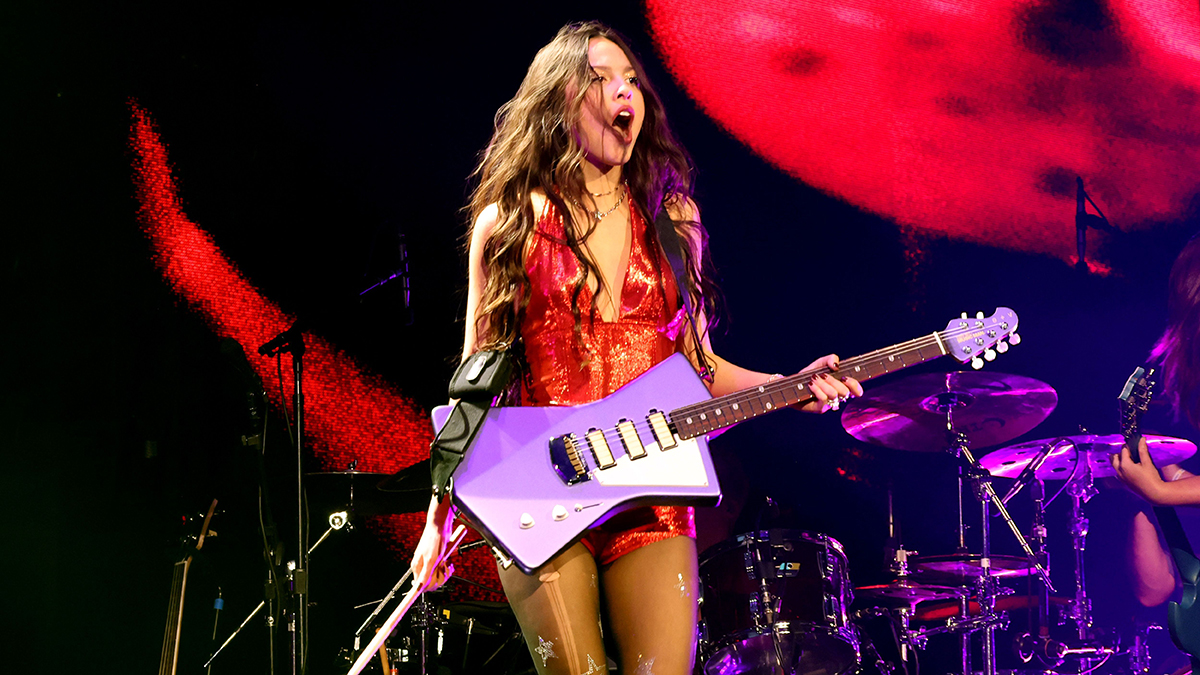The Smile just played their first-ever public gigs – here are six things we learned about the Radiohead offshoot
Thom Yorke and Jonny Greenwood’s latest collaboration performed to their first real-life audiences this weekend, and we were there to spot the nerdy guitar details
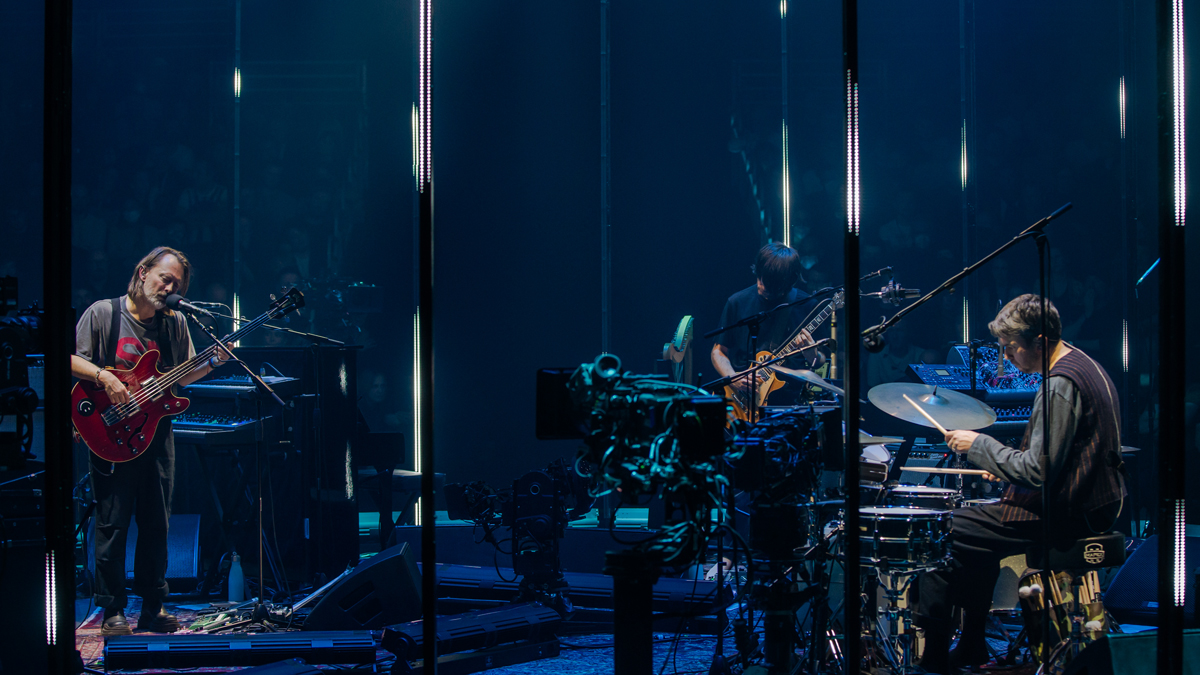
Back in May 2021, Radiohead masterminds Thom Yorke and Jonny Greenwood surprise-debuted The Smile, a new project with bolder guitar leanings than their day jobs. Completed by Tom Skinner, drummer for London jazz outfit Sons of Kemet, the trio made their debut via a Glastonbury livestream, held in place of the actual festival.
This weekend, the group played their first gigs in front of actual human beings. The ambitious setup saw the band perform three shows in the round, all within the space of 15 hours to allow for livestreams of the concerts across three time zones.
As luck would have it, Guitar World was on hand to experience the group’s first performance at London event space Magazine and note down any especially nerdy guitar details. And with two members of Radiohead in the band, there were plenty to spot. Here are six things we just had to share…
1. The Smile are unashamedly prog
Radiohead are perhaps the ultimate ‘stealth’ prog band, consistently pushing their sound but without delving too far into progressive excess. But The Smile don’t hold back.
The time signatures are evidence enough: from the second Yorke launched into the uneasy piano tinklings of 7/8 opener Panavision, the evening only occasionally ventured into 4/4 – hell, the band’s big ‘single’, the Sonic Youth-flavored You Will Never Work in Television Again, is in 5/4, and there were two songs in the rather more challenging 11/8: the eerie Waving a White Flag and unreleased Radiohead reworking Skirting on the Surface.
In part, the band’s penchant for off-kilter grooves could be attributed to Skinner’s fluid drumming, but there’s also the notion that with fewer moving parts to manage, Yorke and Greenwood are able to span a wider array of times, tones and textures themselves. Certainly, there were few sonic landscapes left unpainted by the trio and the monumental array of gear they’d brought with them. Which brings us to…
2. Jonny Greenwood is really into rhythmic delays now
The manic outro of Radiohead’s Identikit was something of a precursor to this particular development, but The Smile’s debut performance confirmed that closely sync’d delay pedals are very much Greenwood’s guitar sound du jour.
All the latest guitar news, interviews, lessons, reviews, deals and more, direct to your inbox!
There was the tight slapback of Greenwood’s, erm, slapped Les Paul riff that drives Thin Thing, Open the Floodgates’ dreamy cascading repeats and the skronky, angular echoes of The Opposite. With the wrong pedalboard, set closer Just Eyes and Mouth could be mistaken for a pentatonic scale exercise, but a shower of dotted-eighth repeats lent it an altogether more ethereal quality.
Interestingly enough, while Greenwood had been spotted with a Strymon TimeLine in rehearsals, he opted for a Boss RE-20 and DD-200 for the live shows. Oh, and he played sans shoes all evening. Toes of steel, that man.
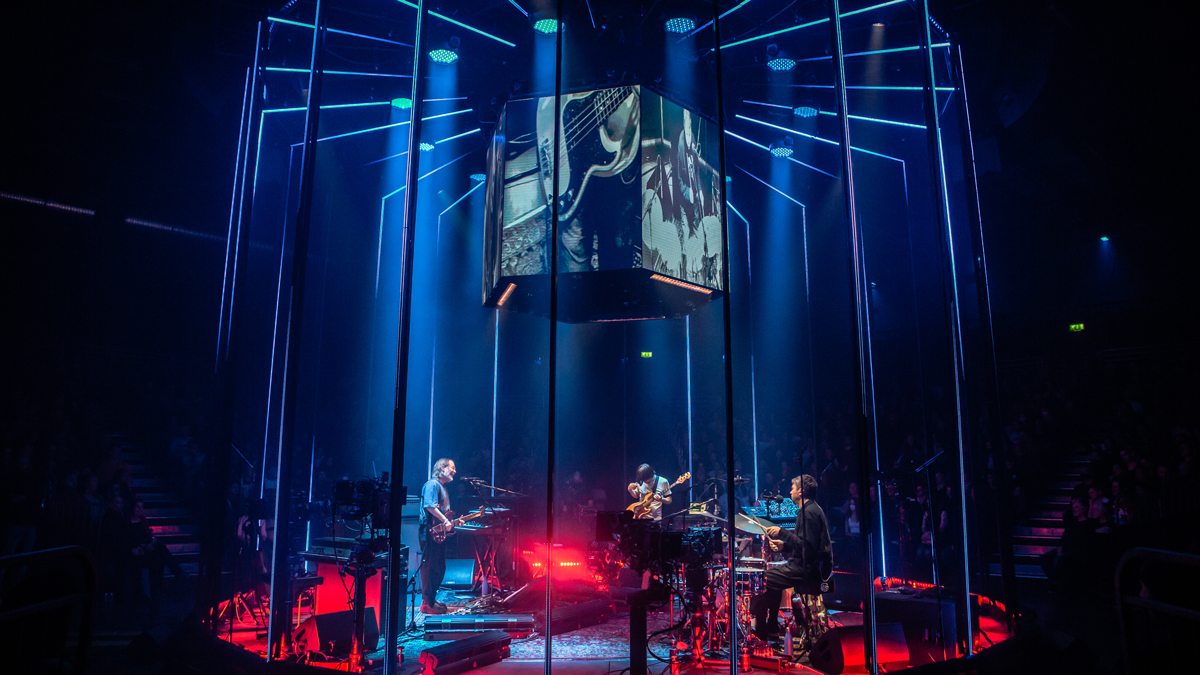
3. Thom Yorke is a mean fingerstyle bass player
The Smile’s trio format finds both Yorke and Greenwood alternating between bass and guitar, but they each have very different approaches to the four-string.
When Greenwood donned his blonde P-Bass, he attacked it in a similar manner to his Telecaster Plus, with aggressive pick strokes and plenty of action at the upper end of the fretboard. Hell, he even whipped out the ol’ violin bow for A Hairdryer’s transcendent intro drone. In short, he plays bass like a guitarist.
Thom Yorke, on the other hand, treated his Fender Mustang like a dedicated maestro of the low-end, whether navigating The Smoke’s snaking bassline with a deft fingerstyle touch, or laying down The Opposite’s slinky stabs. No doubt he picked up a few tips from his time spent with Flea in Atoms for Peace, not to mention Jonny’s brother Colin, who was in attendance that evening.
4. Jonny Greenwood sold a whole new audience on the Les Paul
Rather than his customary Tele Plus, Greenwood relied solely on a Goldtop Gibson Les Paul for his six-string duties – an instrument rarely seen with the guitar anti-hero outside of performances of Steve Reich’s Electric Counterpoint.
The result was a warmer, more robust sound than his wiry single-coil jabs, and one better suited to bolstering the sound of The Smile’s leaner lineup. It was a reminder of the LP’s ability to generate warm, enveloping clean tones, and any hipsters who sauntered into the show thinking they weren’t a ‘Les Paul kind of guitarist’ left craving a big slab of single-cut.
Yorke, however, broke out many of his regular Radiohead touring instruments, including two Epiphone Casinos (one with Bigsby, one without), drop D-tuned Fender Jazzmaster on We Don’t Know What Tomorrow Brings, and a Gibson SG for open-tuned C# modal showcase A Hairdryer. Neil Young-esque ballad Free in the Knowledge played host to a Martin 00-18, while a Guild Starfire II hollowbody bass made a thumpy appearance on Skirting on the Surface and The Opposite.
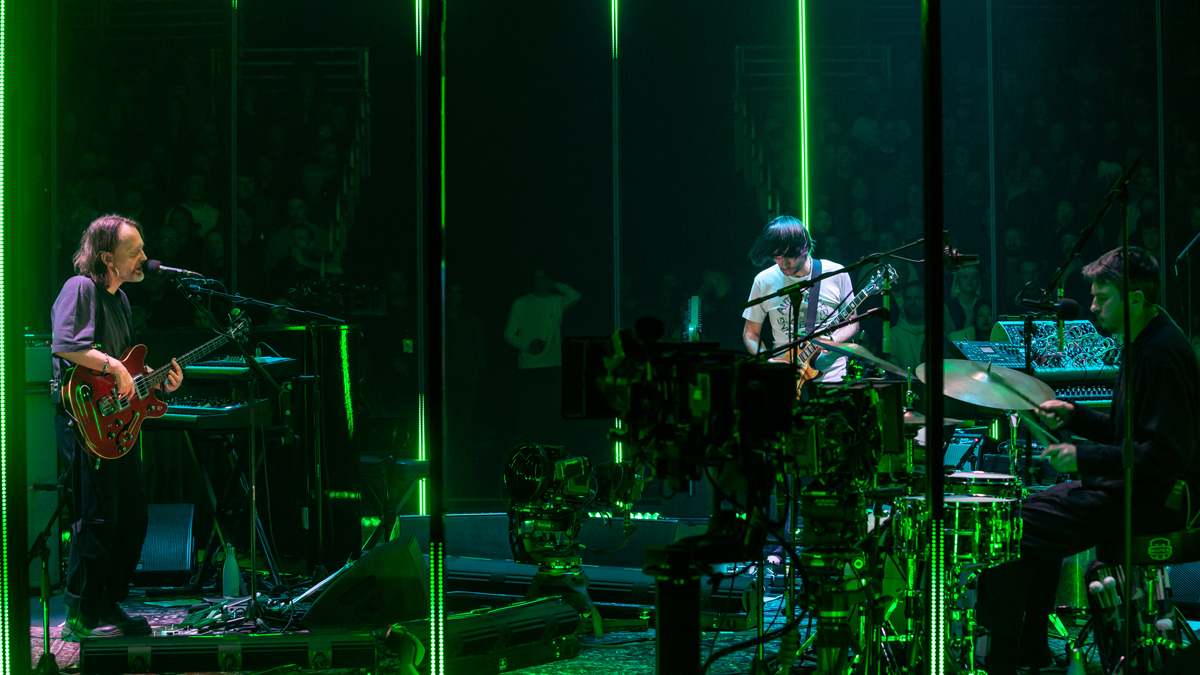
5. The band are really good at multitasking
Yorke and Greenwood are used to having a few more musicians to play with, so the three-piece format forced every member to cleave their brains in two to conjure the kind of expansive textures you’d expect for their large-scale compositions.
Yorke and Greenwood frequently switched between synths and guitars – Skinner even dropped his sticks for the odd modular workout – while one particularly memorable moment found Greenwood plucking a harp while traversing a spiralling piano line in Radiohead-but-not-quite track Speech Bubbles.
Greenwood was masterful with his socked feet, too – on more than one occasion, the multi-instrumentalist went full Geddy Lee, hitting bass pedals while handling tricksy arpeggiated chords in Waving a White Flag or hammering out a blistering punk bassline in We Don’t Know What Tomorrow Brings. Blasts of overdrive and Electro-Harmonix Freeze gave smart dynamic contrast to moments of the set, too.
6. The Smile’s debut album will be something special – and there’s more to come
Yes, comparisons with Radiohead are unavoidable by the very nature of the band’s members and their songwriting tendencies. But The Smile color outside of Radiohead’s lines: there’s a sense of experimentalism that embraces krautrock and prog, and one that feels entirely free of expectation.
It’s the sound of three seasoned musicians making music for the sheer thrill of it, using all the tools at their disposal. It’s a joyous thing to behold, and it appears the band agree, already hinting at music beyond the band’s debut album, which is still yet to receive a release date.
“This has been all too brief,” Yorke admitted towards the tail end of the evening’s 70-minute performance. “When we’ve written some more, we’ll do some more, but we haven’t written any more… yet.”
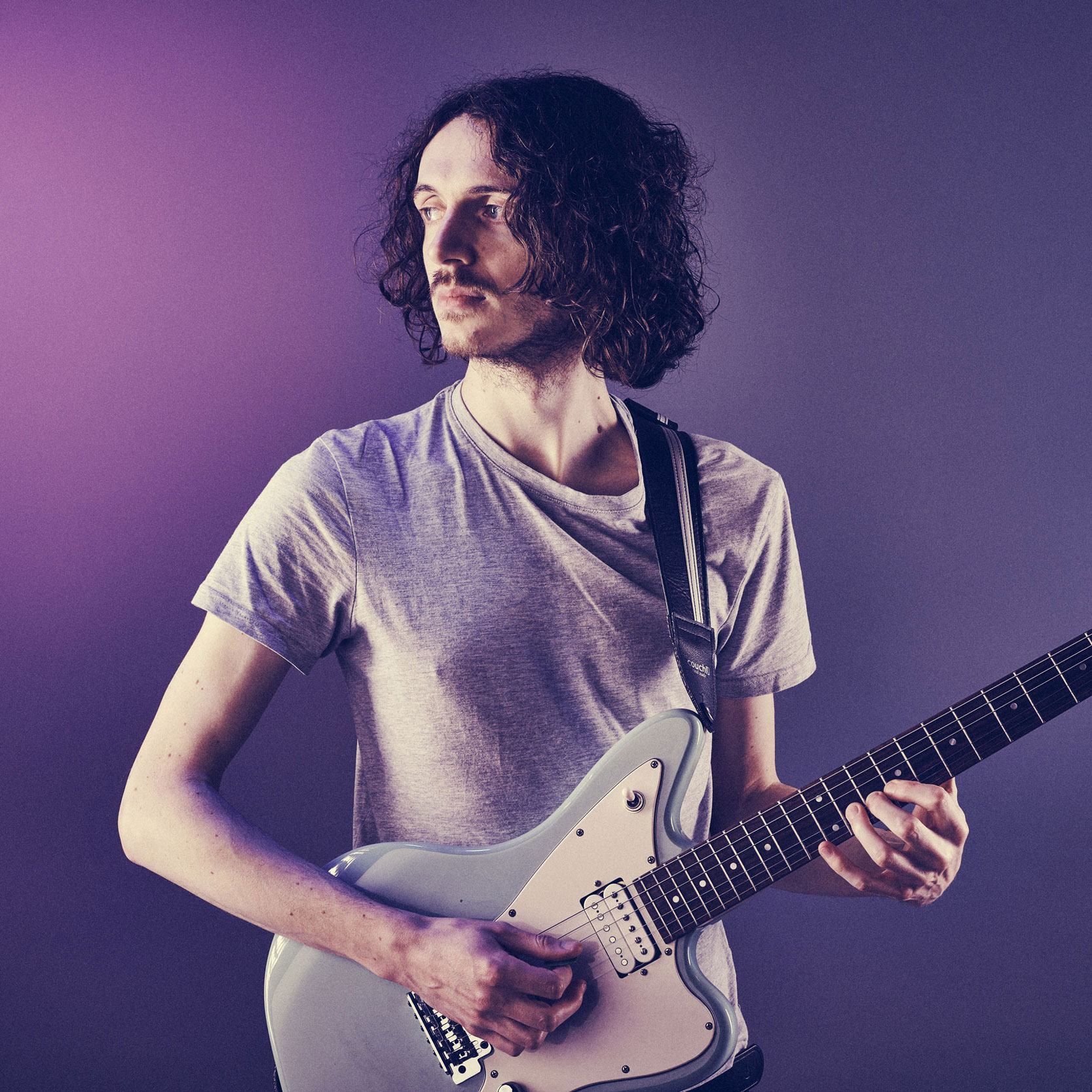
Mike has been Editor-in-Chief of GuitarWorld.com since 2019, and an offset fiend and recovering pedal addict for far longer. He has a master's degree in journalism from Cardiff University, and 15 years' experience writing and editing for guitar publications including MusicRadar, Total Guitar and Guitarist, as well as 20 years of recording and live experience in original and function bands. During his career, he has interviewed the likes of John Frusciante, Chris Cornell, Tom Morello, Matt Bellamy, Kirk Hammett, Jerry Cantrell, Joe Satriani, Tom DeLonge, Radiohead's Ed O'Brien, Polyphia, Tosin Abasi, Yvette Young and many more. His writing also appears in the The Cambridge Companion to the Electric Guitar. In his free time, you'll find him making progressive instrumental rock as Maebe.
